TechRadar Verdict
Pros
- +
Gorgeous OLED panel
- +
Bright whites, deep blacks
- +
Great gamer features
Cons
- -
Some motion blur
- -
Noise in dark scenes
- -
No HDR10+
Why you can trust TechRadar
Two minute review
The LG BX OLED occupies a tense position in LG’s 2020 OLED TV range. As the cheapest of the lineup, it marks a more affordable entry point for those looking to switch to OLED. However, the model with the lowest specification, it somewhat compromises the advantages of an OLED screen. The question, as ever, is whether the trade-offs the LG BX makes are worth the price.
The answer is, almost certainly, a yes.
The BX doesn’t bring many changes over 2019's B9, other than this latest model receiving a slight boost to processing with the new a7 Gen 3 chip – which is itself a step down in capability from the a9 Gen 3 chip used in the LG CX, LG C1, and Gallery Series OLED models.
It offers the same picture advantages as its predecessor, including excellent color vibrance, deep blacks and contrast to make its pictures truly pop. However, the same picture defects remain, too. As with the LG B9 OLED, testing revealed motion stutter around suddenly moving objects – honestly, even a handshake over a still chessboard could do it – as well as persistent grain and banding in dark scenes. While true black is beautiful, making use of OLED’s ability to turn pixels off entirely, less decisive shadows aren’t as brilliantly realized.
Still, the picture is largely impressive, and its shortcomings aren’t enough to ruin our excitement at what the LG BX can deliver. As a cheaper, step-down alternative to the CX, you’re getting largely the same specifications, including HDMI 2.1 support, VRR (variable refresh rate), and the excellent webOS smart TV platform. You even get the same 2.2-channel speakers and Dolby Atmos support, albeit without the TV stand design used by the CX to funnel downward-firing audio towards the viewer.
- Check out the best gaming TVs you can buy
What's important to note here is that the A Series OLED has replaced the B Series in 2021. The A Series makes use of LG's cheaper a7 processor. So don't expect OLED evo brightness or AI picture processing – and do expect some video noise in dark scenes.
This doesn't mean that the LG BX OLED TV we're reviewing here isn't right for you, but if you're looking for the newest LG TV it might be worth checking out the full range of 2021 LG TVs.

Price and availability
The LG BX OLED is the cheapest 2020 LG OLED TV, at just $1,199 / £1,099 / AU$2,995 for a 55-inch model. It’s far cheaper now than at release in the US and UK – having started at $1,399 / £1,299.
The BX is also available in a 65-inch size for $1,999 / £1,799, but only the 55-inch is available in Australia.
Design
- Slim panel, slim bezel
- Four HDMI ports and eARC support
- LG’s Magic Remote is a winner
The LG BX OLED doesn’t differ much from its 2019 counterpart, the B9. You’ll find the same slim OLED panel and thin bezel – and even if it doesn’t reach the heights of Samsung’s zero-bezel infinity screen on the Q950TS, it’s still a television with a negligible outline.
The TV stand is relatively easy to screw into the back of the television, and it’s also surprisingly light, given the heft that such large TV stands usually carry. A trapezoid shape, it sits flatter to the counter than the curved stand of the CX – which is designed to funnel downward-firing audio towards the viewer – but the end result is that it’s less in your eyeline than the step-up model.
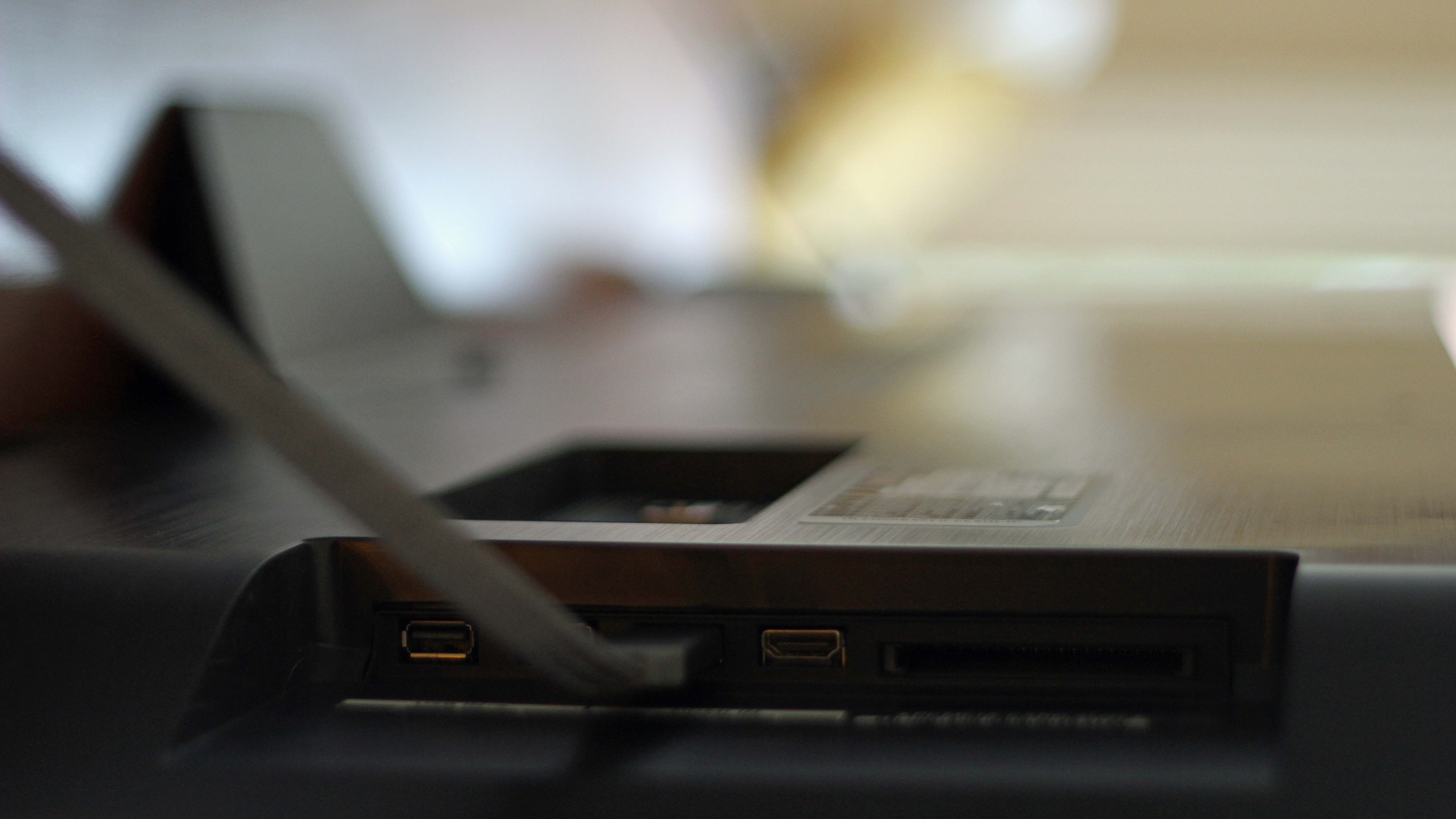
On the back of the set are four HDMI ports, all of the HDMI 2.1 standard – which is pretty impressive for a TV at this price. LG offers similar support across its 2021 OLED range, meaning that 4K/120Hz video passthrough is possible from next-gen game consoles such as the PS5 and Xbox Series X, and you’ll get the benefit of VRR (variable refresh rate) and a low-latency gaming mode too (more on that below).
You’ll also find three USB ports, a PCMCIA card slot, and connectors for satellite, Ethernet and antenna.
Perhaps the best part of the LG BX’s design, though, is its remote control. LG’s so-called Magic Remote comes with an astonishing array of flexibility, offering the ability to navigate via a standard D-pad, a mouse-like scroller, or through point-and-click using the remote’s on-screen cursor. If you’re constantly switching between content libraries, and like the option of scrolling one second and pointing at a menu the next – or, more likely, have different members of your household with different interfacing styles – the Magic Remote has you covered.
The remote does come with dedicated Netflix and Amazon Prime Video buttons, as well as a ‘Movies’ input that takes you to Rakuten TV; it’s somewhat confusingly styled in a red font against a white background, just like the Netflix button. Inclusion of braille around volume and power controls, as well as a handy Source button for jumping to HDMI inputs, more than make up for this.
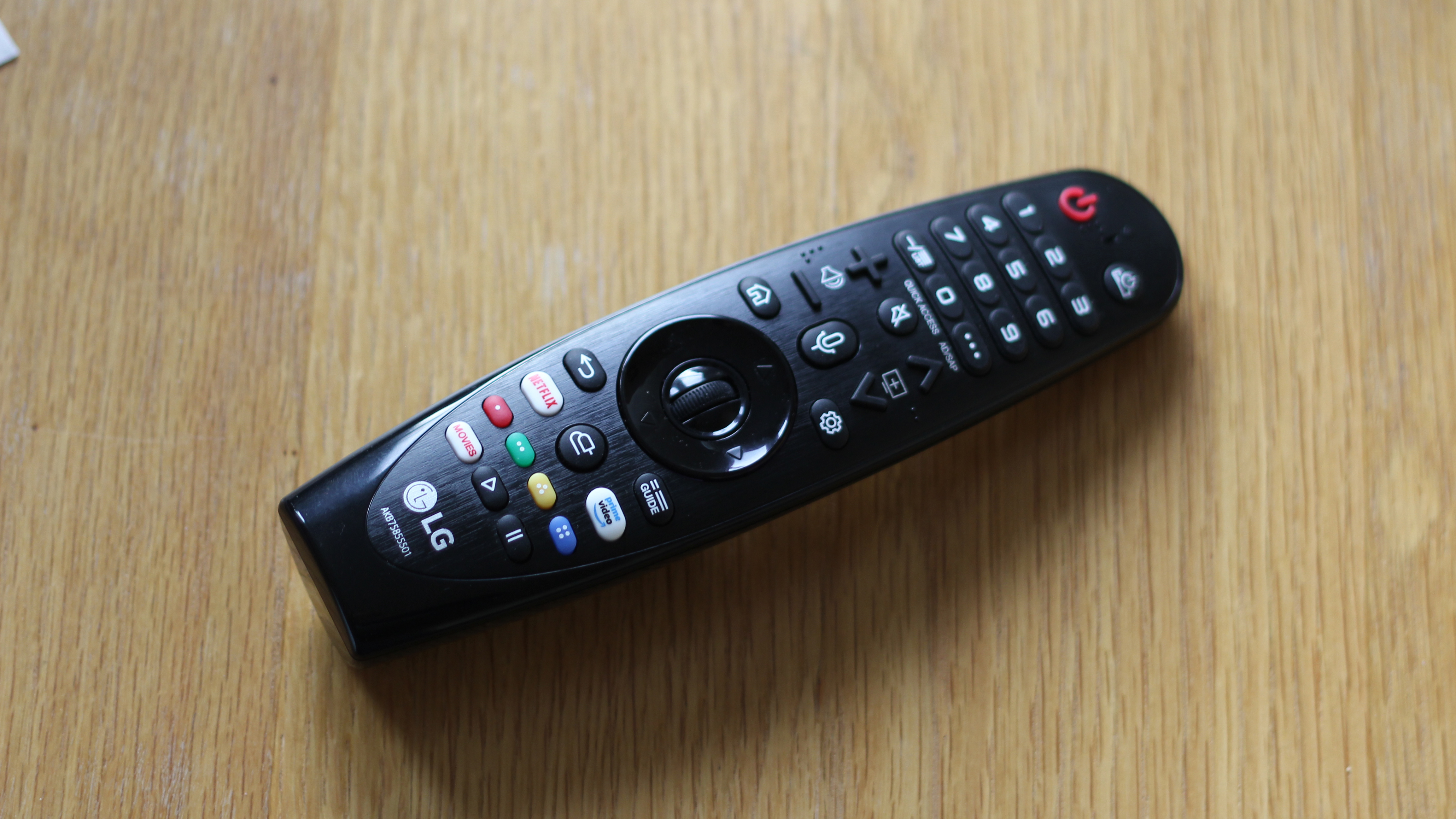
Smart TV (webOS)
- webOS is a pleasure to use, as always
- Good app support, including Netflix, Disney Plus, and Apple TV Plus
- No Freeview Play
LG TVs makes use of the webOS smart TV platform, which is one of the best interfaces around today. It makes use of a horizontal content row, made of slanting tiles for individual app and streaming service icons, giving the home screen a pleasing slant.
As with Samsung’s Tizen, you’ll also now find a secondary content row, which appears above selected apps to show you recent or relevant content – say, a list of popular Netflix shows above the Netflix icon, so you know what you’re getting yourself in to, and can shortcut to key titles, if you wish.
Navigation is a treat, thanks to the feature set of the Magic Remote, as well as LG’s implementation of voice recognition. The BX supports LG’s own ThinQ AI platform, as well as both Amazon Alexa and Google Assistant, without a need for external smart speakers to utilize the assistants (although you can connect to other smart devices, if you wish). There’s a central voice button on the remote, which summons the ThinQ assistant and can speedily take you to desired apps, settings, or content in a flash.
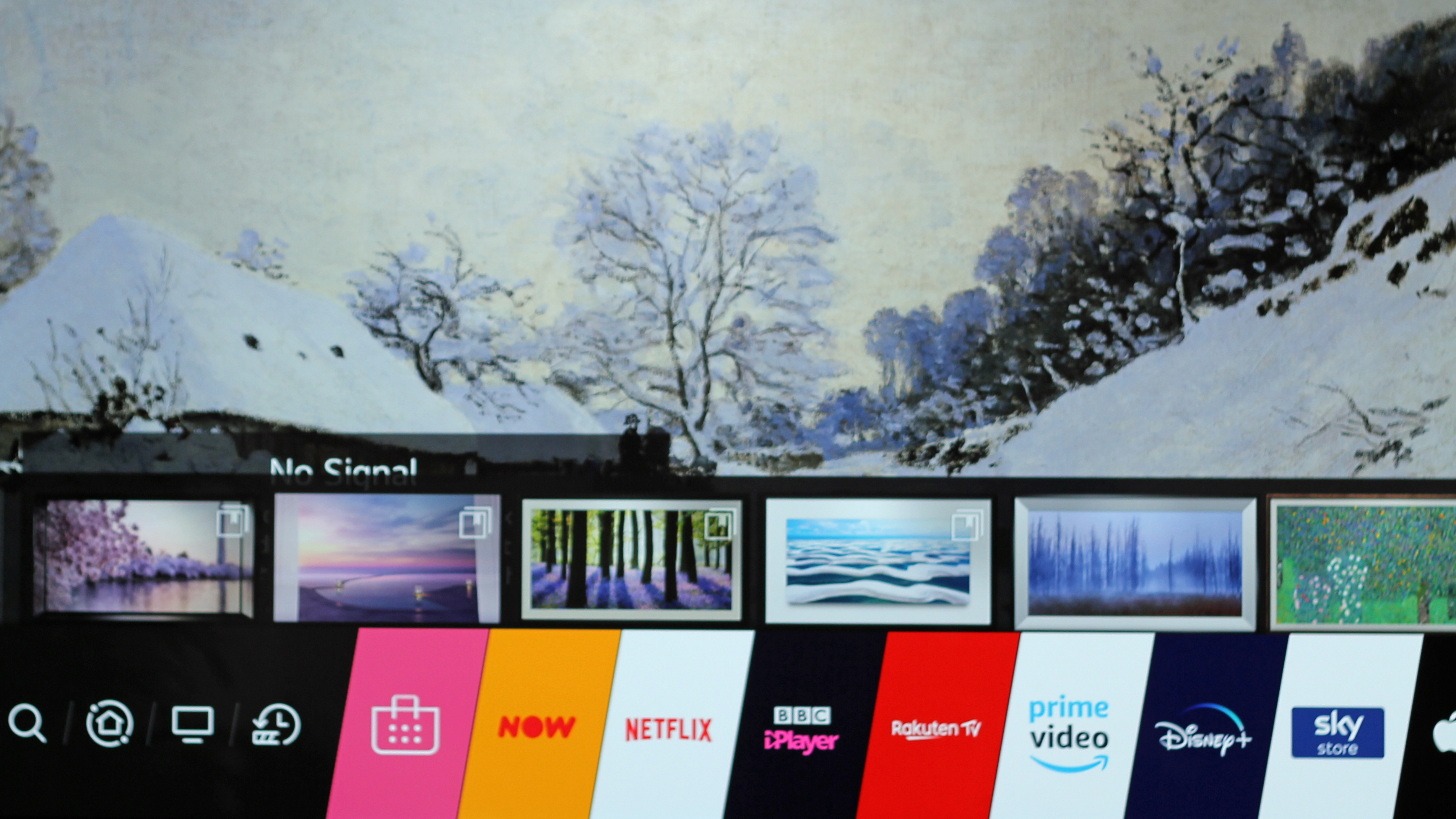
App support on webOS is pretty comprehensive, with the likes of Netflix and Amazon Prime Video (both in 4K HDR), as well as Sky, Apple TV Plus, Disney Plus, BBC iPlayer, YouTube, Now TV, and an internet browser. New in 2020, there's a Sports feature that helps you keep track of broadcasts featuring your favorite team – a minor addition, but a personal one nonetheless.
You won't find Freeview Play here, meaning UK viewers will have to make do with the UK broadcaster catch-up service – something to keep in mind if you tend to stick with BBC, ITV and Channel 4 programming.
There’s support for Apple AirPlay 2 and Apple HomeKit, too.
Picture quality
- Stunning color vibrance and contrast
- Video noise in dark scenes
- Yes to Dolby Vision, no to HDR10+
The LG BX comes pretty close to the CX in terms of its picture capabilities, with some notable exceptions.
Thankfully, this means you won’t be taking a huge hit to picture quality if opting for a cheaper model. But for cinephiles and picture purists, the BX falls short in a couple of key places.
As ever with webOS, there are several picture presets to choose between. The Standard mode shouldn’t disappoint, although the Cinema mode will up the contrast and lower saturation to generally improve the quality of the image on-screen – if you’re watching TV series and films, that is.
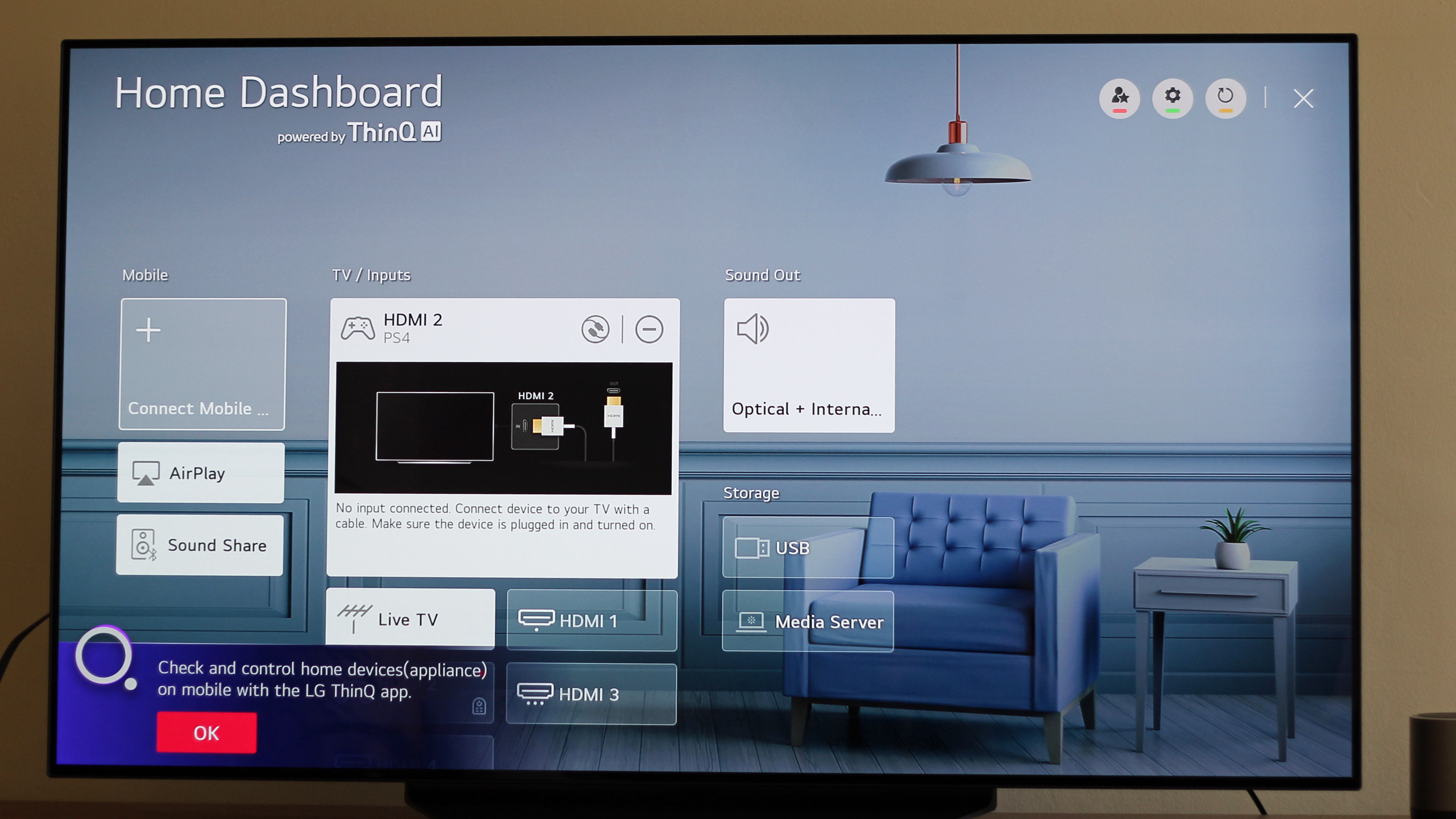
The Eco mode lowers the power output for more environmentally conscious viewers, but you may see a slight drop in brightness – an area in which OLED screens already struggle. The Sports mode, meanwhile, ups contrast and motion-smoothing for fast-paced sports viewing.
Some additional HDR presets will appear when watching HDR-compatible content, with Home Cinema making more concessions for ambient light in your home.
As always, we advise against the Vivid mode, which distorts color accuracy in favor of a more dynamic picture. Just don’t do it, please.
HD content looks exceptional on this 4K screen, and upscaling isn’t an issue. Facial or environmental details are convincingly upscaled to fit the BX’s many pixels, with brilliant results. It’s a shame, then, that this quality doesn’t extend to darker scenes.
We sat down to watch the excellent pilot episode of How To Get Away With Murder, and were impressed by the detail on show, from the crisp outfits of the college’s many type-A students, to the intense expressions of Viola Davis. OLED excels in letting light and dark co-exist, and even watching Davis draw with white chalk on a blackboard is visually thrilling.
But we noticed a stark difference between bright objects and colors – a roaring bonfire against the night sky; the costume of a cheerleader being flung into the air, and the shadowy woods that the episode frequently cuts to.
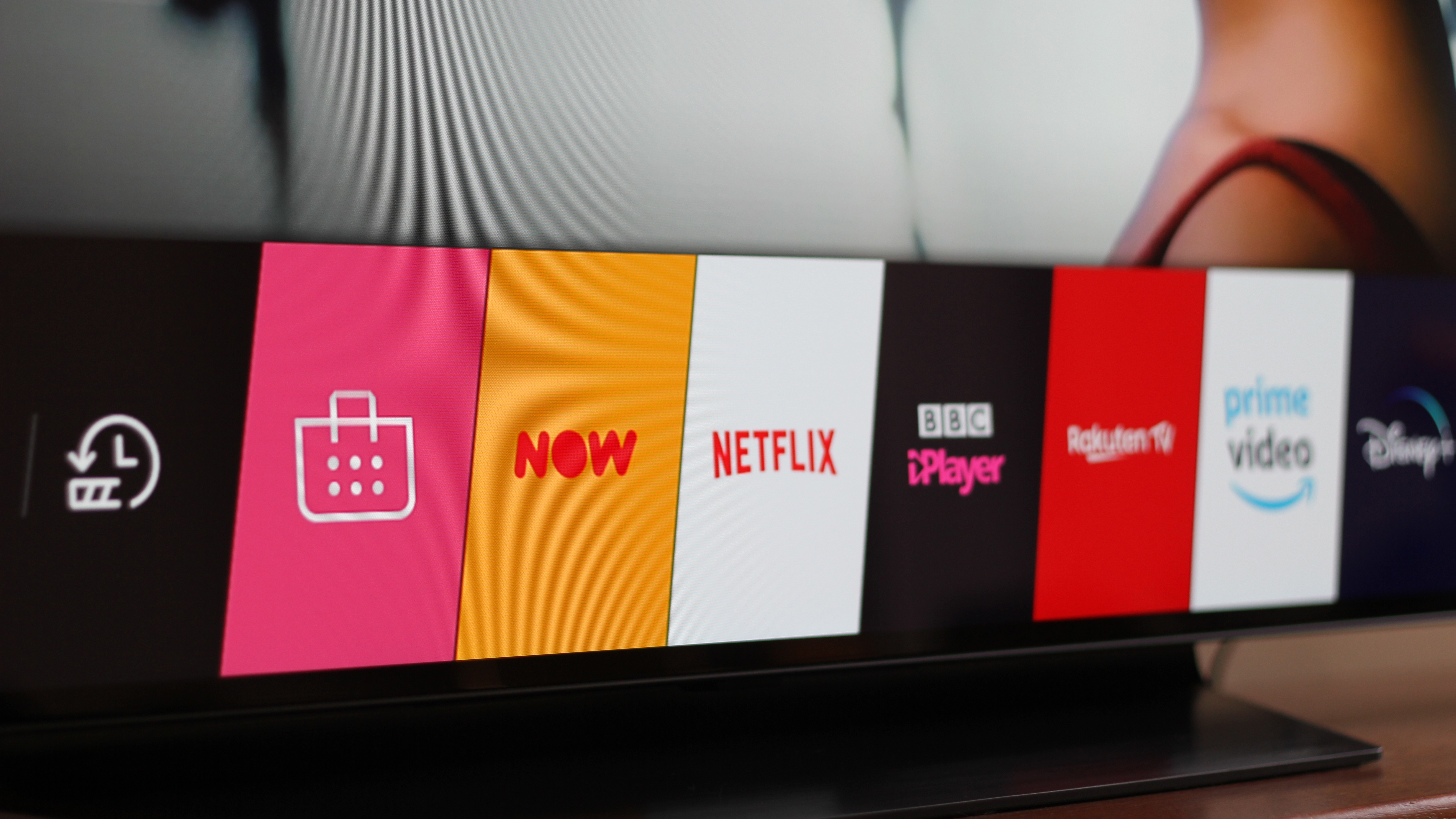
In well-lit shots, or scenes with a mix of colors on show, the BX’s processor does an excellent job of bringing images to life. It’s only when things get murkier that the chip appears to struggle, adding a layer of grain that isn’t visible in brighter scenes.
This issue is quite clearly down to the mid-spec a7 Gen 3 processor, and shouldn’t ruin movie night on its own. We saw the same issue in last year’s LG B9 OLED model, and it didn’t temper our enjoyment much then, either.
The BX OLED is still a great choice for movies – even the black letterboxing on films with a wide aspect ratio offers a firm, lightless outline that makes the enclosed images appear punchy and vibrant.
It was breathtaking to put on a 4K Blu-ray of The Greatest Showman and watch the opening number, with the red of Hugh Jackman’s coat and its delicate gold detailing looking positively startling on this OLED screen. The BX is no slouch for color vibrancy, and the amber lights and flaming torches of the film’s central circus practically burnt themselves right onto our retina.
Given OLED’s ability to switch off pixels entirely, there’s no danger of blooming around light sources, and bulbs and flames alike are somehow brilliantly illuminated and tightly controlled – a flicker of destruction, held in loving hands.
The BX does have a slight issue with frame stutter, however; sudden movements often cause a brief glitch of video noise, even in well-lit scenes. Even a quick handshake between Anya Taylor-Joy’s Beth and a competing chess player in The Queen’s Gambit could set it off – even if it’s a very brief distraction from an otherwise visually thrilling TV experience.
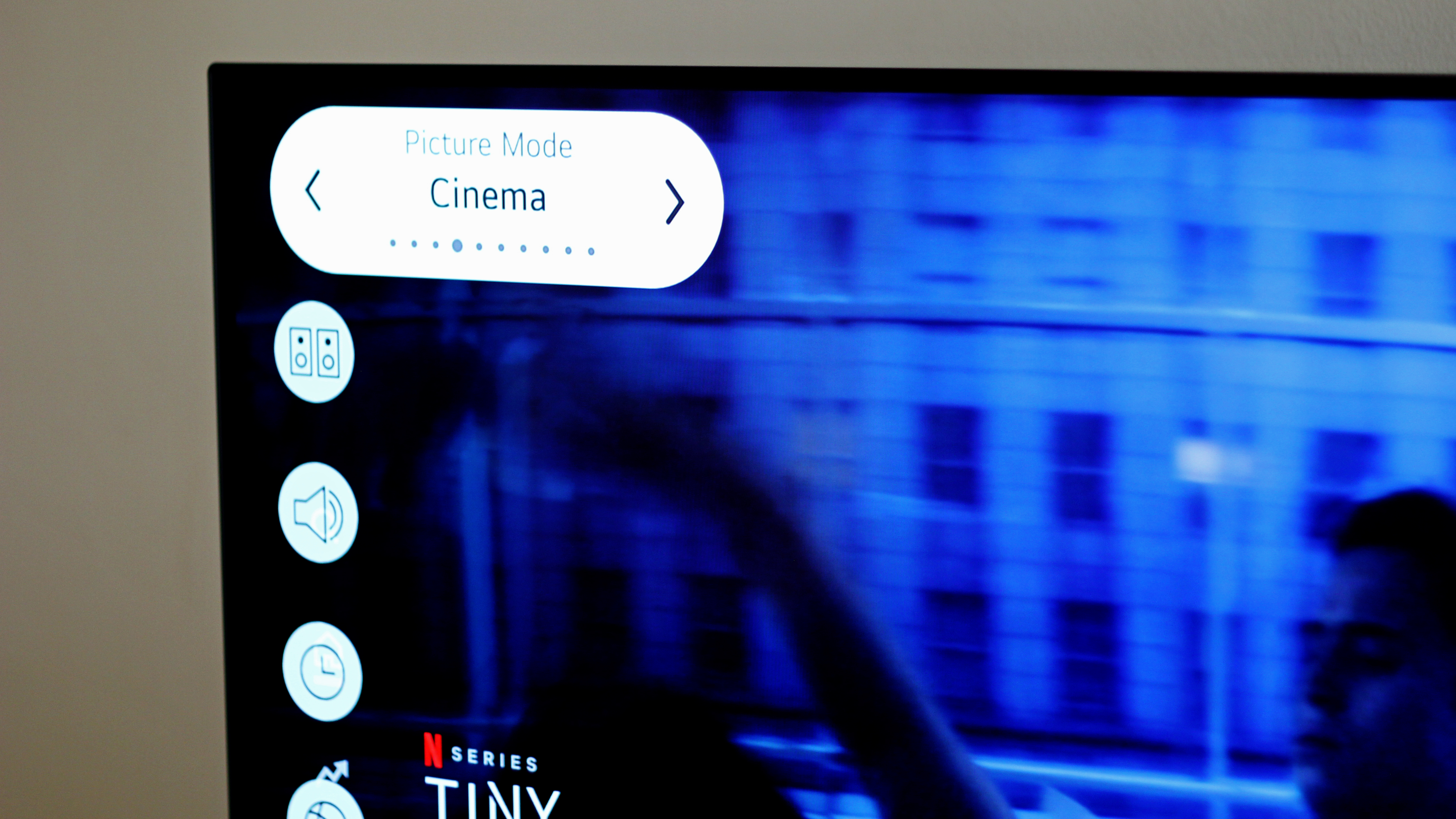
- VRR, ALLM, and Nvidia G-Sync
- High contrast images
- Four HDMI 2.1 ports for next-gen consoles
There is a final picture preset we haven’t mentioned yet, which is the Game mode. This is when gamer-specific features such as VRR (variable refresh rate) and ALLM (auto low latency mode) come into play, helping to prevent screen tearing and keeping down input lag for responsive gameplay. It means the BX may be a sensible choice for the PS5 or Xbox Series S, and it’s worth noting that we didn’t see much of the video noise or motion issues mentioned above when playing in Game mode. The 120Hz panel and HDMI 2.1 support means you can get truly next-gen performance from these consoles, too.
OLED panels are great for most video games, because of their high-contrast picture, helping to keep character models looking distinct and well-realized against their computer-generated backgrounds. Playing Yakuza 0 on Xbox Game Pass, we were impressed with the picture quality on offer, with the OLED’s deep blacks making even puddles on the pavement look startling dark – not to mention the vivid neon of signage around the game’s depiction of ‘80s Tokyo.
All 2020 LG TVs offer Nvidia G-Sync, if you’re hooking up a compatible gaming PC to your television. Although our Computing Editor, Bill Thomas, is adamant that this won’t benefit very many players.
Keep in mind that Game mode may still be in effect when you switch back from a console to TV streaming, and it’s always worth checking you’re in the optimum picture and audio presets for the type of content you’re watching.

Audio performance
- 40W of Dolby Atmos audio
- 2.2-channel system
- Decent sound, with a wide array of audio settings
But what of the audio? The BX offers 40W total output over a 2.2-channel system, just like the CX OLED (and last year’s B9). That’s fine for living room volume, and we rarely found ourselves pushing to the upper limits of this – although it does mean there are sets out there with more accomplished built-in audio systems, such as the Panasonic HZ2000 with its 140W audio and upward-firing speakers.
The CX also makes use of a TV stand designed to funnel its downward-firing audio towards the viewer, which is something the BX lacks. It means sound isn’t as immediate as it could be, and 2.2-channel audio won’t reach the separation of a 5.1.2-channel system. Nevertheless, it’s still appropriate to the price and well above standard 20W built-in speakers.
The sound is generally strong and impactful, whether bringing out the timbres of an actor’s husky voice, drawing out an ominous knock on a door, or launching into a punchy pop soundtrack.
Sound does vary wildly between audio presets, though. Switching to Cinema audio vastly ups the bass – something that was welcome when watching The Greatest Showman, as you’re wanting the full impact of its showtunes. Voices and dialogue take something of a back seat in this setting, and you can opt for the Clear Voice mode instead. This makes voices clearer and is great for clarity at lower volumes, in particular – although this will kill the bass and can get a bit scratchy on the ears at louder settings.
AI Sound, meanwhile, offers quite a good option between the two, albeit without the bassy punch of Cinema. There are Sports, Music, and Game settings for those specific-use cases, too.
Should I buy the LG BX OLED?
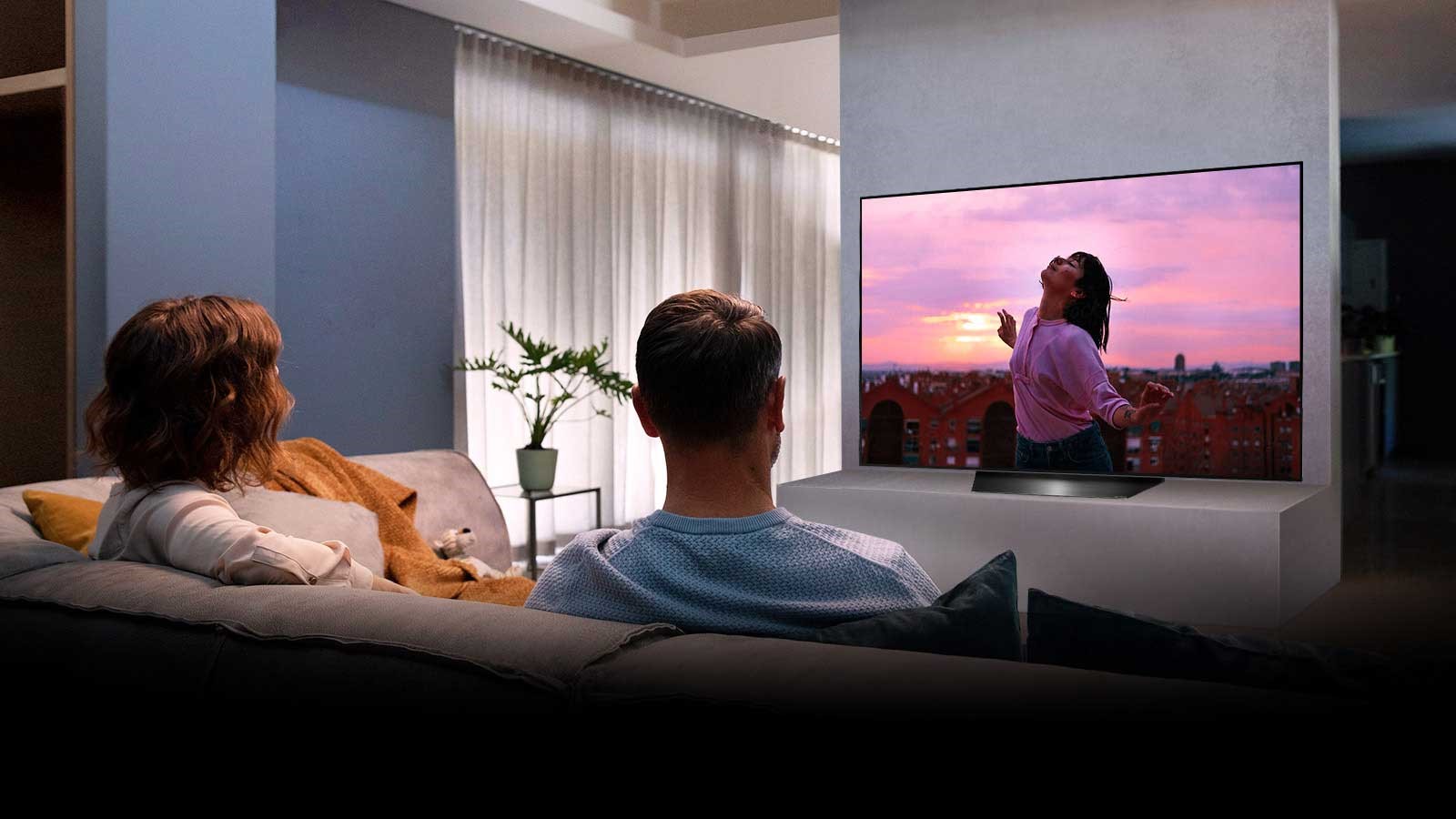
Buy it if...
You want a solid, affordable OLED TV
The LG BX OLED is the entry-level model for LG’s 2020 OLED range, and it isn’t easy to find a cheaper model elsewhere outside of sales.
You want an excellent smart TV platform
webOS is one of the best interfaces for smart TVs out there, with a slick horizontal layout, good smart assistant and connectivity standard support – and a brilliant Magic Remote.
You want a TV for both movies and games
The LG BX offers excellent blacks and high-contrast images – good for both films and games. The inclusion of VRR and ALLM, as well as HDMI 2.1 support, means both current- and next-gen consoles should fare well on the BX’s screen.
Don’t buy it if…
You want top-notch audio
The BX has capable sound for the price, but the directional sound of high-end Samsung TVs or upward-firing audio on Panasonic OLEDs will put it to shame.
You want a perfect OLED picture
The mid-spec A7 Gen 3 processor in the BX means the picture isn’t quite as accomplished as that of the CX, with some video noise in darker scenes and occasional motion issues.
You want a 48-inch OLED
The BX doesn’t come in a 48-inch size – you’ll need to opt for the LG CX OLED for that.
- Check out the best OLED TVs out there
Henry is a freelance technology journalist, and former News & Features Editor for TechRadar, where he specialized in home entertainment gadgets such as TVs, projectors, soundbars, and smart speakers. Other bylines include Edge, T3, iMore, GamesRadar, NBC News, Healthline, and The Times.
